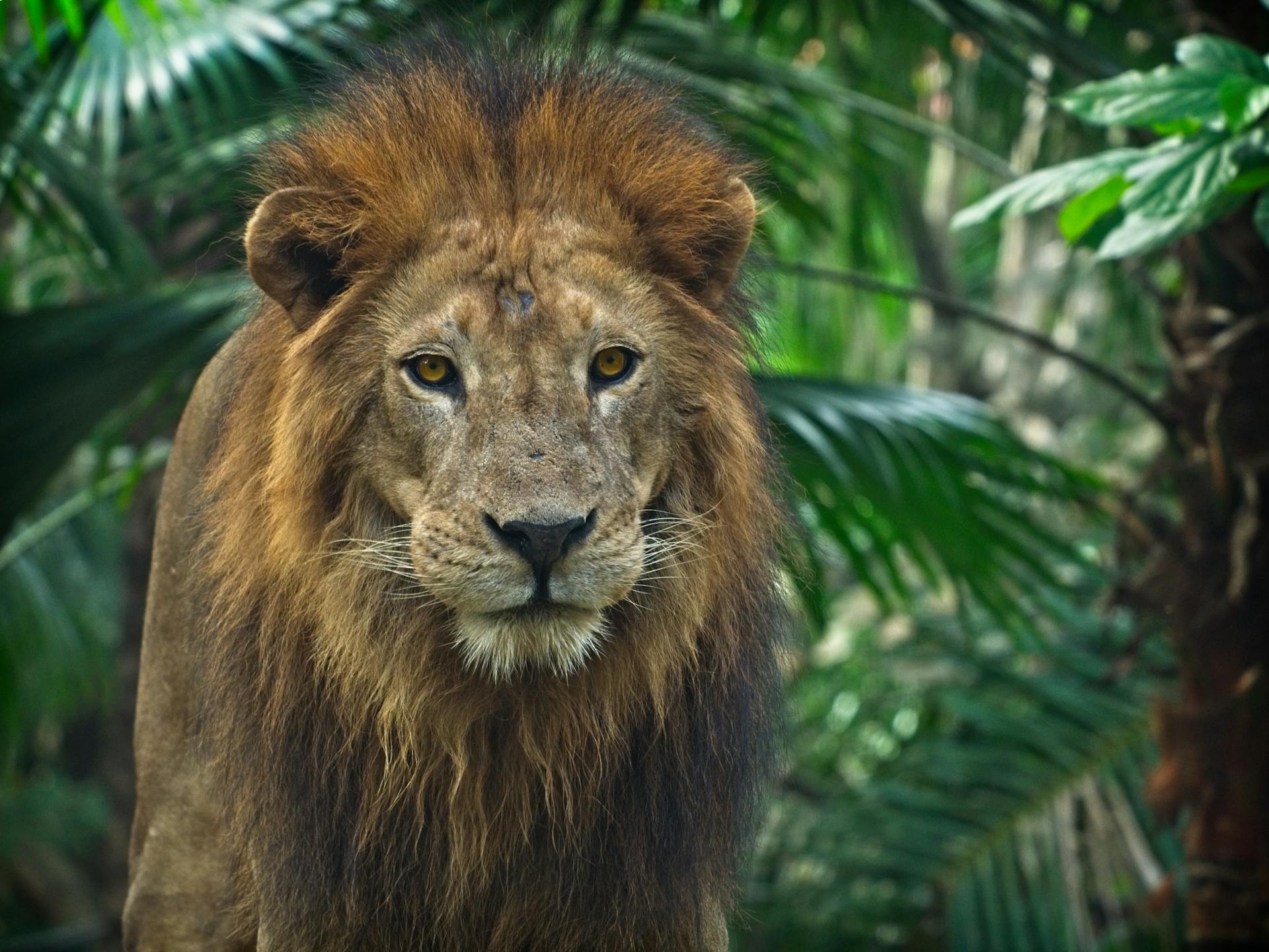The large predators - dabbling
into the lifecycle and ecology of lions

Publishers - SOGfacts-team | Last updated - 01-07-2025 |
In this article, we will be discussing the general community and lifestyle of lions, the heads in the food
chain cycle. Lions are generally perceived to be ferocious carnivores, and we will uncover what makes
them choose their preferences over other necessities in the animal kingdom.
Ecological Role as Predator
Lions, as apex predators, play a crucial role in their ecosystems, influencing the populations and
behavior of their prey species and maintaining the balance of their ecosystems.
Regulating Prey Populations
Lions prey on a variety of species, including large ungulates, which helps to regulate their populations and
maintain a balance between herbivores and vegetation. For example, in the Serengeti, lions prey on
wildebeests, zebras, and antelopes, which helps to maintain the balance of the ecosystem.
Maintaining Ecosystem Health
The presence of lions also helps in maintaining ecosystem health and biodiversity, as they play a key role in
shaping the ecosystem's structure and function. Lions' predation pressure can influence the behavior and
habitat use of their prey species, which can have cascading effects on the ecosystem.
Hunting and Feeding Behavior
Lions are extremely skilled hunters that often work together to stalk and ambush their prey. They use
coordinated attacks to overwhelm their victims.
Stalking and Ambushing
Lions use a cover and stealth technique called stalking to get close to their prey. Often, this technique requires
using bushes, rocks, or other features to conceal themselves. Once close enough, lions suddenly burst into a
sprint, using their speed and power to catch the prey.
Targeting Weak Prey
Lions prefer to target young and weak animals that are easy to catch. This strategy helps them conserve
energy and reduce the risk of injury.
Feeding Behavior
Lions are social animals that often eat together and feed in a hierarchical manner, with dominant individuals
getting priority access to food. They are capable of consuming large amounts of meat in a single meal, with
successful lions gorging themselves on up to 20-30 pounds (9-14 kg) of meat.
Physical Characteristics and Adaptations
Lions are majestic creatures with distinct physical characteristics that enable them to thrive in their savannas and
grasslands habitats.
Body Size and Build
Lions are large felines, with males weighing between 330-550 pounds (150-250 kg) and females weighing between
260-400 pounds (118-182 kg). They have powerful muscles, particularly in their legs, shoulders, and back, which
enable them to tackle large prey.
Claws and Jaws
Lions have retractable claws that are used for climbing, grasping, and tearing flesh. They also possess strong jaws
and teeth that are designed for delivering a killing bite to their prey.
Night Vision
Lions have excellent night vision, thanks to a reflective layer in the back of their eyes called the tapetum lucidum.
This adaptation helps them hunt and navigate in low-light conditions.
Some specialized features of lions include
Mane: The male lion's mane serves as a sign of masculinity and helps protect his neck during fights.
It may also play a role in attracting females.
Rough Tongue: Lions have a rough tongue that helps them scrape meat from bones and groom their coats.
Paw Pads: Lions have padded paws that help them move stealthily and make sharp turns while stalking prey.
Conservation Status and Threats
Lions are currently classified as Vulnerable on the IUCN Red List, with their population declining by 43% since 2000.
There are fewer than 20,000 lions remaining in the wild.
Habitat Loss and Human-Wildlife Conflict: Lions are losing
their habitat due to human activities like agriculture, urbanization, and infrastructure development.
As lions' habitats shrink, they come into closer contact with humans, leading to conflicts over resources like food
and water.
Poaching and Illegal Wildlife Trade: Poaching and illegal wildlife trade are significant threats to lion populations.
Lions are hunted for their body parts, which are used in traditional medicine or sold as trophies.
Prey Depletion and
Trophy Hunting: Prey depletion and trophy hunting are also major threats to lion populations. Unsustainable trophy -
hunting practices can disrupt lion social structures and reduce their populations.
Conservation Efforts
Some conservation efforts are underway to protect lion populations, with success stories in places like:
Niokolo Koba National Park in Senegal: Conservation efforts have led to an increase in lion populations in this park.
Gorongosa National Park in Mozambique: Successful conservation initiatives have contributed to growing lion
In the vast
expanse of the savannas and grasslands, lions reign supreme as apex predators, their majestic manes and powerful roars
a testament to their regal status.
Through their intricate social structures, cooperative hunting strategies, and adaptability to their environment, lions have
evolved to thrive in their ecosystems. However, these magnificent creatures face numerous threats to their survival, from
habitat loss and human-wildlife conflict to poaching and prey depletion.
Conclusion
As we reflect on the life and ecology of lions, we are reminded of the importance of conservation efforts to protect
these iconic animals and their habitats. By supporting conservation initiatives, respecting their space, and promoting
coexistence with humans, we can ensure the long-term survival of lions and the ecosystems they inhabit.
Ultimately, the fate of lions serves as a barometer for the health of our planet’s ecosystems. By working together to
safeguard their future, we not only preserve the majesty of these large predators but also uphold the delicate balance
of nature. As we strive to protect lions and their habitats, we are, in effect, protecting the very essence of our planet’s
biodiversity and wild beauty.